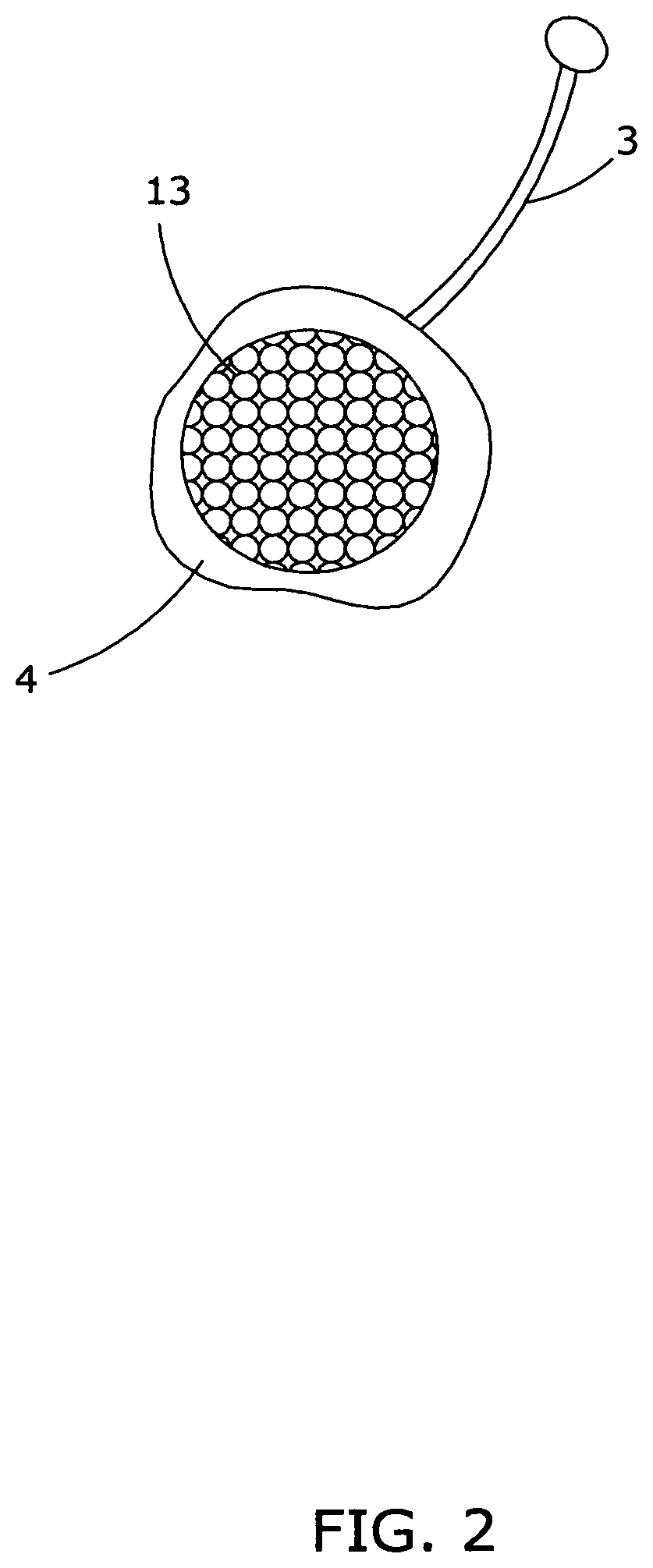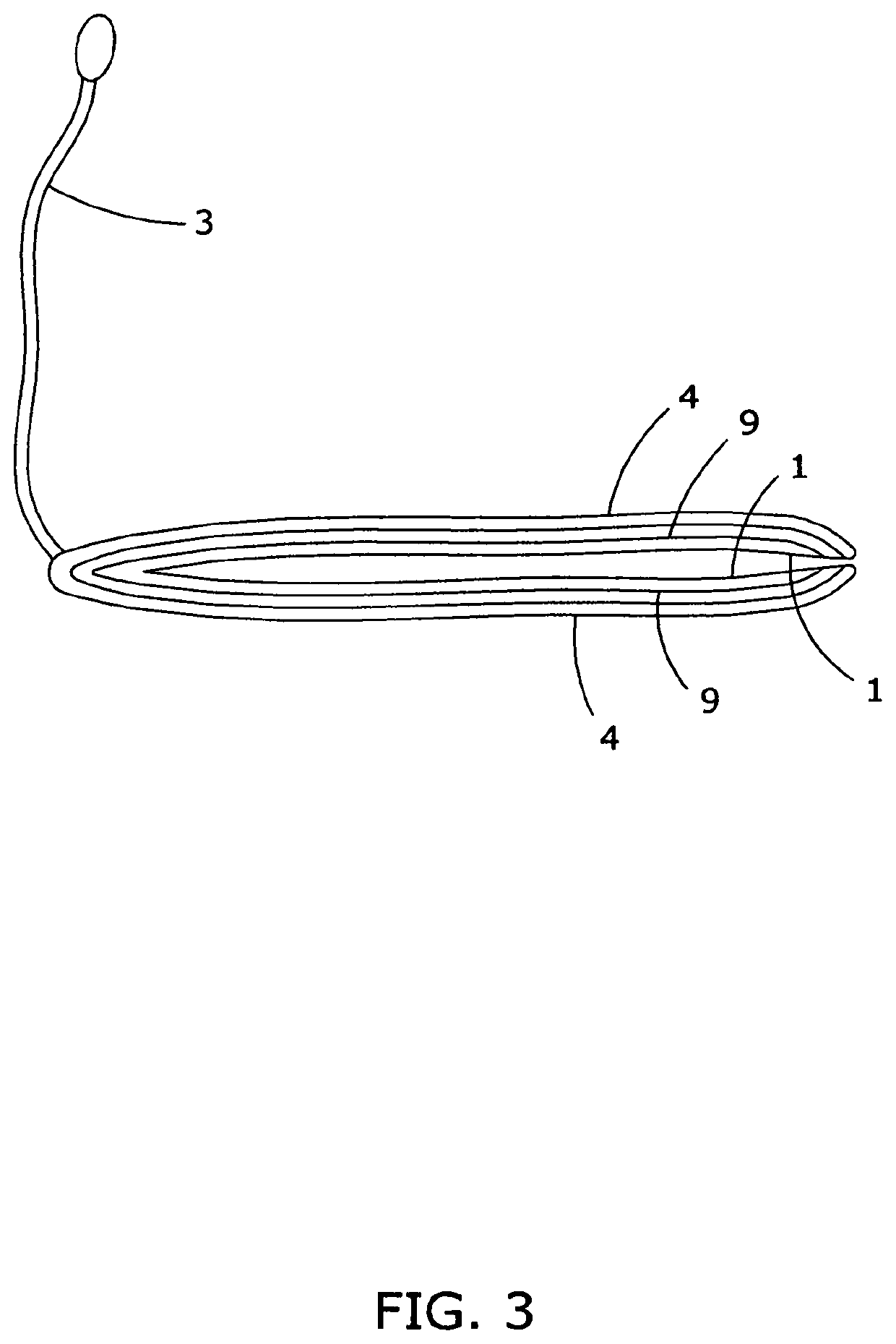Devices and methods for quickly removing unwanted water from tanks
a technology for unwanted water and tanks, applied in liquid fuel feeders, machines/engines, separation processes, etc., can solve the problems of serious environmental damage, inconvenient transportation, and inability to quickly remove unwanted water from tanks, so as to reduce transportation costs and cleanup costs, reduce pollution, and facilitate transportation
- Summary
- Abstract
- Description
- Claims
- Application Information
AI Technical Summary
Benefits of technology
Problems solved by technology
Method used
Image
Examples
seventh embodiment
[0090]In a seventh embodiment, the WATER HOG can have one or more zippers, in each of the layers enclosing the SAP, so that a user who wishes to empty the SAP in the WATER HOG can unzip each of the zippers, and pour out the SAP. Then, if the user wishes to re-use the casings, and put “refill pouches” of SAP into the WATER HOG again later, the user may do so, and zip up the WATER HOG again. For example, the PC may have a zipper, and the containment skin may have another zipper.
[0091]WATER HOGS that contain other means of opening and reclosing the containment skin and PC to remove the SAP and add new SAP are explicitly part of the present invention.
[0092]Other embodiments of the WATER HOG are possible that combine characteristics of two or more of the embodiments described herein, and / or that have other characteristics presently known in the prior art.
Some More Advantages of the Water Hog Over the Prior Art
[0093]America's petrochemical industry, including entities such as fueling faci...
first embodiment
[0099]The first embodiment, and most other embodiments, of the WATER HOG can be disposed of after use in numerous ways, some of which are the following:
[0100]First, the user can cut open the WATER HOG, pour out the SAP, and allow the SAP to dehydrate. In embodiments with zippers, the user can use the zippers to open the layers of the WATER HOG that surround the SAP. Once the SAP has dried, it will have a fraction of the weight that the SAP had when it was wet. Therefore, the SAP can be disposed of much more easily and economically.
[0101]Second, the user can place the whole WATER HOG in a safe location where the WATER HOG can dry. The WATER HOG will then rapidly lose weight. The whole WATER HOG can be disposed of more easily because it will have lost most of its weight as the water evaporated.
[0102]Third, the user can dispose of the whole WATER HOG in accordance with local, state, and federal\ regulations. In most cases, the WATER HOG can be placed in a “Hazmat” container, which are ...
second embodiment
[0114]FIG. 1 shows a WATER HOG of the second embodiment inserted into a turbine sump. The fuel in the sump is floating on a layer of water that has accumulated there, in the lower areas of the turbine sump. Water is being absorbed into the WATER HOG. The matrix is exposed to the water.
[0115]FIG. 2 shows a cross-section of a version of the first embodiment of the WATER HOG.
[0116]FIG. 3 shows a WATER HOG of the second embodiment, as it would appear when laid down.
[0117]FIG. 4 shows a WATERHOG with specialized microbes, inserted into the interstitial spaces between the walls of a fuel reservoir at a fueling facility.
[0118]FIG. 5 shows a WATER HOG being used together with several watery spill cleanup mats of the invention of U.S. Pat. No. 8,512,522, and a wall of water-activated FLOODBAGs of the invention of application Ser. No. 16 / 280,013. The WATER HOG is being used to remove a layer of water, and a layer of “sheen” in-between the pure water below and the oil products above. The water...
PUM
 Login to View More
Login to View More Abstract
Description
Claims
Application Information
 Login to View More
Login to View More - R&D
- Intellectual Property
- Life Sciences
- Materials
- Tech Scout
- Unparalleled Data Quality
- Higher Quality Content
- 60% Fewer Hallucinations
Browse by: Latest US Patents, China's latest patents, Technical Efficacy Thesaurus, Application Domain, Technology Topic, Popular Technical Reports.
© 2025 PatSnap. All rights reserved.Legal|Privacy policy|Modern Slavery Act Transparency Statement|Sitemap|About US| Contact US: help@patsnap.com



